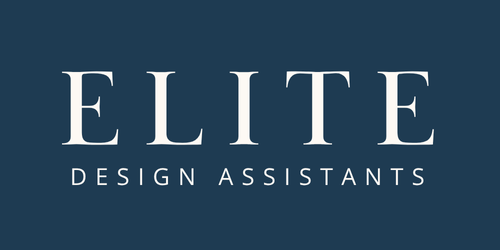Collaboration Over Competition in Interior Design
/While interior design is a highly competitive business, the secret to success doesn’t necessarily lie in cut-throat competition. Pouring all your energy into doing more and better than the rest is a rough and lonely road. The good news is that the new marketing climate lends itself very well to optimizing efforts through collaboration. So let’s talk about how to find others to journey through it with you.
Why collaborate?
When you join forces with another professional in an ongoing collaboration, it allows you to expand the range of services that you can offer. There is an increasing demand for end-to-end solutions, and when you’re not able or interested in providing certain complementary services, you can outsource them while still assuring your client that you’ve got them covered.
In addition to bringing together different services, collaborations often promote innovation and learning. Having a pair of fresh eyes on your initiatives or meeting somewhere halfway can yield surprising and interesting results. Collaboration is a strength. Whether it’s a short-term pact or a long-term alliance, there are many great opportunities for mutually beneficial partnerships.
And certainly one of the main benefits of collaboration is that it is a means to share audiences online, expand your reach in your marketing efforts, and build up each other's authority and reputation in the industry.
Collaboration Opportunities for Interior Designers
Some of the most successful collaborations are with companies or brands that are not direct competitors, but at the same time, their target audience is the same. Ideally, your existing audiences do not overlap much. This way, everyone wins, and that’s exactly how you should begin the conversation when approaching a potential collaboration partner.
Suppliers - Chances are, you already have a few leads. Interior design firms sometimes partner with product or material vendors by featuring each other in blog or social media posts. By comparing the reach of your respective audiences, you can come to a fair compensation arrangement.
Furniture design - From furniture to fabric, brands are partnering with interior designers to create signature collections that reflect their shared vision. These deals mean increased exposure for both parties, as well as an attractive portfolio and commission for you.
Contractors - Similarly, external companies such as builders, painters, or movers could be promising prospects. Putting the spotlight on positive experiences with each other is a powerful marketing message and builds trust in your company. You might also consider meeting with other related specialists such as photographers, landscapers, florists, or furniture restoration companies.
Real Estate Agencies - Here’s an example of a line of business whose interests may be aligned with your own. You both want to bring out the best in a home. Some real estate agencies already have their in-house interior design department, but there is still plenty of room to make your pitch as a home stager or have them refer clients to you in exchange for a commission.
Content Creators - They are experts at getting the word out and attracting new clients. Team up with a fashion influencer, gourmet chef, or any personality with an audience akin to your target customer. One possibility is to offer them a free room decorating service. Then, they take their viewers on a tour of the space showcasing your work. Instagram stories, TikTok videos, and blog posts are just some of the ways that you can recruit content creators to promote your interior design business.
Other Interior Designers – There are many interior designers out there that collaborate with each other because they complement each other. Maybe you focus on residential but you have been asked to do commercial projects, or perhaps your wheelhouse is a modern coastal aesthetic but clients have been asking for eclectic. Or maybe you collaborate with another designer based on location, connections, etc. There are many reasons you may want to consider collaborating with another interior designer.
Tips for Interior Design Collaborations
As you can see, collaborations can take many different forms, but smart professionals always start with a clear objective and strategy to achieve it. Regardless of how friendly the relationship may become, cover your bases by putting a non-disclosure agreement in place if the nature of the collaboration calls for it. Outline each commitment in detail and track progress by checking results such as customer engagement statistics and referral rates. Getting started and staying on top of it is a time investment with a great return.
When is it better to compete than collaborate?
Well before considering a collaboration, it’s fundamental to have defined your business’s competitive edge and better yet, your niche in the industry. You want to stand out from competitors for your particular expertise. That’s where you want to hold your ground and grow. Only then can you market yourself with a clear message to both potential collaborators and clients.
xx, Danae







